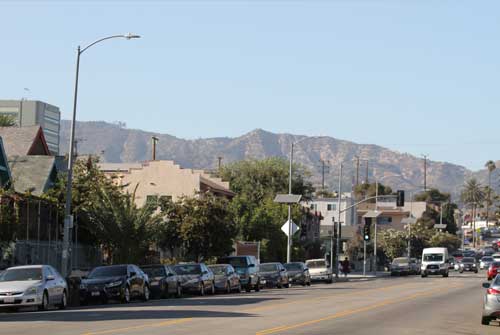Just as the industry is optimistic about the prospects in early 2017, the LED industry is beginning to enter a state of rapid recovery. Recently, major LEDs have released their first-half performance forecasts. The listed companies with the same A-share LED concept have generally achieved good results in the first half of this year. Nearly 90% of the company's net profit has achieved significant growth, of which more than 30% have achieved. Net profit doubled multiple times.
Recently, 12 Chinese semiconductor lighting companies such as Mulinsen, Shanghai Sansi and Shengdi Optoelectronics voluntarily submitted a letter of commitment: in the next two years, they will sell a total of 3.29 billion LED lamps and 5.77 million LED street lamps.
Xu Bin, general manager of Op Lighting, said, “If all street lights are replaced by LED lights, the annual electricity savings will be equivalent to the annual power generation of the three Three Gorges power stations.â€
In recent years, “energy saving, emission reduction and sustainable development†has become the main theme of future development. Industry experts have said that LED lighting plays a huge role in energy saving and emission reduction and affecting climate change. The actions of several LED companies will further promote the rapid development of the LED lighting industry.
According to the monitoring data of the High-tech Research Institute LED Research Institute (GGII), the global LED market in 2016 was 699.6 billion yuan. It is estimated that the industry scale will reach 849.7 billion yuan in 2020. Among them, the output of LED lighting in China is about 8 billion, and the industrial scale is 5,216 yuan, a year-on-year increase of 22.8%.
“Initially, LED as a new generation of light source to replace traditional light source is because of energy-saving factors. With the improvement of energy-saving awareness and the constant change of lighting environment, LED light source will continue to be large in the absence of a new generation of light source technology. Replace the traditional light source lighting." The relevant person in charge of Amins Technology told Gaogong LED.
According to estimates, in 1998, global lighting consumed a total of 230 billion US dollars of electricity, while generating 410 million tons of carbon dioxide gas during power generation. If half of ordinary light sources are replaced by LED lighting by 2025, it means global Each year, it will save 100 billion US dollars in electricity and reduce emissions of 350 million tons of carbon dioxide.
What did you do on the road to “sustainable development�
In September 2015, 193 countries of the United Nations adopted the UN Sustainable Development Goals and proposed 17 development goals. Among them, sustainable cities, clean energy and climate protection have been repeatedly emphasized, and “sustainable development†has become an important trend in international development.
As a global lighting leader, Philips Lighting has a long-standing sense of crisis in energy and the environment, and has always been advocating and practicing its position in sustainable development. As a 125-year-old company, Philips Lighting believes that sustainability is not only a responsibility, but also the key to future success.
Indeed, Philips has been working hard on the road to sustainable development for many years.
· At the 21st UN Climate Change Conference in Paris on November 30, 2015, Philips promised to fully use renewable energy by 2020 to achieve carbon neutrality in its operations.
· In June 2016, Philips Lighting reaffirmed this commitment at the 7th Clean Energy Ministerial Meeting in San Francisco and shared its successful experiences in addressing these challenges with other organizations and companies.
· In 2016, Philips Lighting released the next five-year sustainable development plan – “Sparkling Life, Better Worldâ€, and committed to increase the sales of sustainable products, systems and services to 80% by 2020. .

"Shiny life, beautiful world"
· On June 8 this year, Philips Lighting reaffirmed its commitment to sustainable development: by 2020, it will sell more than 2 billion energy-saving LED bulbs worldwide, achieve carbon neutral operation in Greater China by the end of 2017, and achieve global carbon operation in 2020. with.
It can be seen that Philips Lighting has a deep understanding of sustainable development and has formed its own philosophy, development path and development strategy system.
Eric Rondolat, global CEO of Philips Lighting, said frankly, “We not only regard sustainable development as corporate responsibility, but also an imperative global action. For us, sustainable development is fundamentally improving our Development path."
Philips Lighting calls on every city in the world to replace road lighting with LED luminaires by 2025. At present, there are nearly 300 million street lamps worldwide, and only about one-tenth of them are energy-efficient LED lighting.
Philips Lighting is working with cities around the world to demonstrate the tremendous impact of retrofitting road lighting. For example, Philips Lighting's partnership project in Los Angeles transforms all of the city's streetlights into smart, interconnected LED lighting. Last year, the city's public lighting achieved 73% energy savings and reduced emissions by 47,000 tons.

Philips Lighting's Smart Street Light Renovation Project in Los Angeles
Is the "lighting as a service" model unreliable?
It is understood that Philips Lighting is promoting the rental mode of its lighting equipment, and leading the industry to transform into a circular economy through the business model of “lighting as a serviceâ€. In this model, Philips holds ownership of equipment and lighting systems and provides lighting services to its commercial customers.
Yang Yanhui, director of marketing at Zhongke Core Sources, believes that “the new business model of Philips Lighting is worth learning. It is similar to the current EMC contract energy management model and PPP model, and is expected to be more mature in the next few years.â€
Wang Yinghua, deputy general manager of Shanghai Sansi, also believes that “the components that LED bulbs often break down are its power cord. After the lease mode, manufacturers can recycle the LED bulbs and just continue to use the power supply. In theory, It can be 100% recycled. This business model is of great significance to the manufacturing industry in reducing costs, which can effectively improve the reuse of resources, reduce carbon emissions, and promote sustainable economic and social development."
Of course, there are also people in the industry who question the rental model of Philips Lighting, which is considered to be catching the eye of the industry and disrupting the market.
Faced with doubts, Philips Lighting said that although the brand itself introduced a rental model, there are still some customers who choose to purchase equipment directly. In fact, the leasing business has so far only accounted for a small portion of Philips Lighting's overall business, but it has received more attention because it will undoubtedly be the future of the lighting industry.
For the business model of systems and services, the circular economy model will continue to develop, bringing good development prospects for enterprises. In other words, customers can not only choose to buy traditional products, but also choose to pay only for the enjoyment of lighting services and light experiences.
The lighting company provides services to customers with a complete lighting system including lighting products and maintenance systems. The product and service models complement each other and there is no opposition.
In recent years, due to the large investment in the early stage and the long return period, the energy-saving service industry requires a lot of funds for implementation. Therefore, insufficient funds and financing difficulties are the main obstacles in the energy conservation and environmental protection industry.
According to the characteristics of the energy-saving service industry, many leasing companies have entered the energy-saving and environmental protection business mainly through garbage recycling and water pollution through innovations in leased product innovation and business model innovation, such as direct rent mode, leaseback mode, direct rent + energy saving guarantee mode. Processing, electric energy, thermal energy conservation and other projects, and mainly for small and medium-sized projects, just to fill the difficult problem of financing small and medium-sized energy conservation and environmental protection projects.
After more than 30 years of landing in China, financial leasing finally ushered in a flash point. It is estimated that the total scale of China's financial leasing assets has exceeded 5 trillion yuan, and it has successfully ranked among the second largest leasing market in the world. Only 8 years ago, the total size of China's financial leasing assets was less than 50 billion yuan.
The Internet of Things or the development of a "circular economy"?
As for how the circular economy should develop, experts generally believe that the global Internet of Things will play a large role in boosting.
According to the relevant person in charge of Emmings Technology, “With the full recognition of LED products by consumers, the future will focus not only on simple light source applications and energy saving, but also on combining other functions such as WIFI hotspots and smart homes. Smart city street lights, etc., have been transformed from ordinary household lighting and commercial lighting to intelligent integration. Therefore, after the new technology is added, LED light source is not only a lighting product, but also a smart product."
"Future energy saving means that lighting becomes more intelligent, intelligent dimming, people come to light, people go out, use time control, automatic control, sensor control, system control and other intelligent control methods, lighting fixtures are more convenient to operate. Using technologies such as the Internet of Things, cloud computing, big data, artificial intelligence, etc., can achieve different needs of users, and the use effect is better." Wang Yinghua said.
In order to cope with higher lighting performance, energy efficiency and digital lifestyle, smart connected LED lighting will be increasingly favored by the end consumer market due to its high efficiency, energy saving and sustainability.
In the view of Chairman Huapu Yongming, "The change of LED lighting is mainly reflected in two aspects, one is lighting energy saving, controlling lighting, and achieving security lighting; on the other hand, functional, joining the city Internet of Things, WIFI And other elements, but this is just the application of our street light pole as a carrier, which is beyond the scope of our lighting."
It is undeniable that in the context of circular economy, the lighting industry faces three major opportunities. First, further popularize lighting to meet lighting needs; second, achieve more energy-efficient lighting; and third, achieve intelligent interconnection of lighting.
According to Yang Yanhui, “Importation of the Internet of Things can dim the lamps, increasing the energy saving rate by 10%-20%. The energy saving rate of the LED lamps itself has reached 60%. After adding elements such as dimming, the energy saving rate can reach 70%-80%. At present, the Internet of Things has developed very mature, especially in street lamps and tunnel lights."
The trend of intelligent lighting has been confirmed by industry and market. According to the report of the High-tech Research Institute LED Research Institute (GGII), with the future technology, mature products, active promotion of manufacturers, and popularization of concepts related to smart lighting, the market will continue to grow. It is expected that the global LED intelligent lighting market will reach 300 in 2020. One hundred million U.S. dollars. Among them, the Chinese market will account for nearly 30% of the global market and is expected to reach 10 billion yuan.
Next, Philips Lighting will continue to use smart connected lighting technology to transform home, office and urban public spaces around the world into sustainable smart spaces. Achieving sustainable development is not only conducive to environmental protection, but also conducive to the development of the global economy.

Fork Type Terminals,Insulated Bullet Sockets Terminals,Insulated Bullet Terminals,Type Fork Insulate Terminal
Taixing Longyi Terminals Co.,Ltd. , https://www.txlyterminals.com